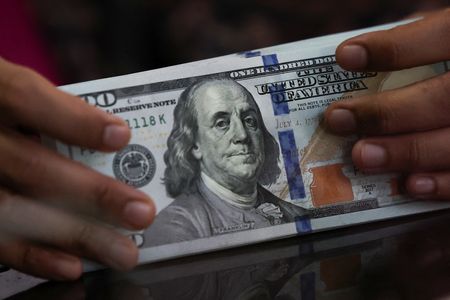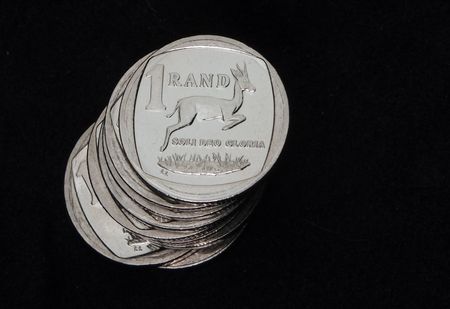By Stefano Rebaudo
(Reuters) -The U.S. dollar was on track for a modest weekly gain on Friday as investors sought to balance the Federal Reserve’s hawkish tilt against lingering concerns over the U.S. economy.
Meanwhile, investors were assessing the fallout from data that sounded an alarm bell for the global economic outlook: Chinese exports unexpectedly fell in October, recording their steepest drop since February, after months of frontloading U.S. orders to dodge tariffs.
The dollar started a five-day winning streak last week after Federal Reserve Chair Jerome Powell acknowledged the risky nature of further easing moves, but it dropped sharply on Thursday on soft labour data.
U.S. Treasury yields also fell on economic uncertainty caused by the extended government shutdown in Washington and questions over the legality of President Donald Trump’s tariffs.
“With the December Fed meeting more or less a coin toss which crucially depends on the labour market picture, the market is overreacting to any hints about the labour market,” said Mohit Kumar, an economist at Jefferies, noting the lack of economic data as the government shutdown continues.
“Our view remains that Powell’s comments from the last FOMC meeting suggest that the bar for a December cut is high,” he added.
With the shutdown postponing the release of the monthly non-farm payrolls report, traders have turned to private sector data which showed the economy shed jobs in October in the government and retail sectors. Cost-cutting and the adoption of artificial intelligence also led to a surge in layoffs.
Barclays forecast earlier this week a 60% chance that the U.S. government shutdown – the longest in U.S. history – would end between November 11 and 21, while assigning a 15% probability that it could extend into December.
The dollar index, which measures the currency’s strength against a basket of six peers, appreciated 0.14% to 99.81 and was on track for a 0.08% weekly rise. It has recovered some strength but remained lodged within the same trading range it has sat in since August.
A rush into safe-haven assets earlier this week supported the U.S. dollar, which has regained some of its safe-haven appeal, analysts said, even as the Japanese yen emerged as the market’s preferred defensive play.
Tech-heavy stock markets were heading for their biggest weekly falls in seven months, adding to market anxiety.
Traders ramped up bets on a rate cut even as Chicago Federal Reserve President Austan Goolsbee said on Thursday the lack of official data on inflation “accentuates” his caution about cutting interest rates further. “When it’s foggy, let’s just be a little careful and slow down,” he told CNBC.
Trading in Fed funds futures implies a 65% chance of a cut at the U.S. central bank’s next meeting on December 10, according to the CME Group’s FedWatch tool.
The euro fell 0.1% against the dollar to $1.1535, outperforming other European currencies such as sterling and the Swiss franc.
The euro is drawing support from expectations of a steady policy rate, while both the U.S. and UK are seen cutting rates further in 2026.
The dollar rose 0.23% against the yen to 153.41, after hitting 152.82 earlier in the session, its lowest level since October 30.
The Australian dollar was flat at $0.6480, while the kiwi fell 0.4% to $0.5609.
(Reporting by Stefano Rebaudo; additional reporting by Gregor Stuart Hunter; Editing by Sam Holmes, Emelia Sithole-Matarise and Kim Coghill)











